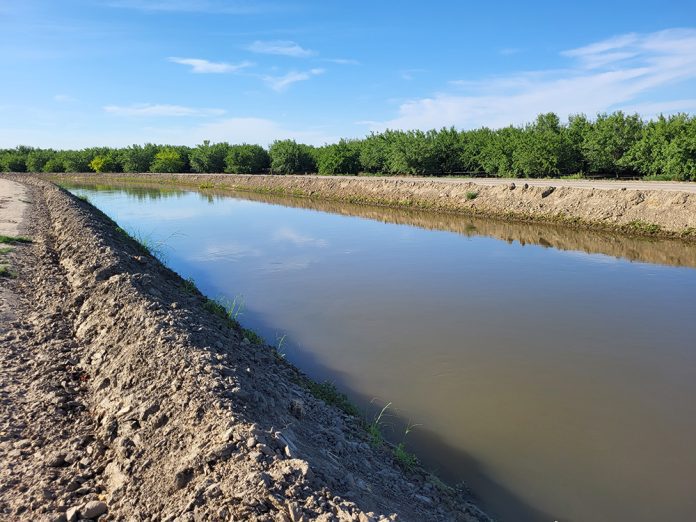
As private investigator Jake Gittes unravels a corrupt plan to bring water to 1930s Los Angeles in the film noir classic, Chinatown, he asks, “You have any idea what this land would be worth with a steady water supply?”
Cinematic storytelling aside, the question is still valid today, especially in California’s Central Valley. Water dominates all talk of farmland values here, something few people know better than Michael Ming.
Ming has more than 30 years of agricultural brokerage and appraisal experience in Kern County, one of California’s top almond and pistachio areas. He is an accredited rural appraiser, a professional real estate broker and the owner of Alliance Ag Services. His Bakersfield-based company counts eight professional team members who serve commercial customers across California. Ming is also an expert on the Sustainable Groundwater Management Act (SGMA), California’s landmark 2014 legislation.
Water availability, or lack of it, and mounting economic losses in almond and walnut production have upended land values since Ming shared his tree-nut property assessments with West Coast Nut in spring 2021. Back then, he reported investors were eagerly buying California’s larger tree nut properties to diversify their portfolios. Large family operations looking to expand were also showing buying interest. Even sales activity for walnut property remained stable.
But, as Ming discusses here, it’s a very different scenario now.

Q. What’s happening with land values for almonds, pistachios and walnuts?
It’s all about water, water, water. If you’re in a river district with good, solid surface delivery, your land values are holding or increasing a little. In the second quarter of 2023, open land in a river district in Kern County has a value of between $18,000 and $30,000 an acre.
Q. What level of buying interest is out there?
We’ve seen a cooling-off period of buyer interest. A lot of people have their hands in their pockets, waiting until the first or second quarter of 2024.

Q. Are they waiting for interest rates to come down?
I think they’re waiting for the end of harvest. So much money has been lost in the almond market over the past couple of years that it’s created a vacuum of capital. All these private equity investors, insurance companies, big family farming operations, they almost all have almonds. Now they’re saying, “Let’s see where we are in the first quarter, second quarter, and then start redeploying capital at that point.” There are billions of dollars on the sidelines right now, money sitting in their portfolios just waiting. To me, that means a lot of buyers have taken a hands-off position until they see where almond prices are going.
Q. What about pistachios?
When buyers started pulling back from almonds, they started pushing forward into pistachios. So, it drove the price up for a short period of time. We had some sales up in the $60,000s per acre. One of the sales at $65,000 in Fresno County was a situation where the buyer had to close on it. It was a 1031 Exchange, a last option. And the seller knew it. There was nothing special about that pistachio orchard. It was not what you would think of as prime land in the greatest water district with the greatest soil. While there have been sales this year in the $60,000s, I don’t realistically think that’s the market going forward. I think it will be more in the $50,000s for really primo orchards.

Q. That’s still impressive, isn’t it?
Yes. I look back at how much capital has been lost in the almond market over the past years that would have been redeployed. Buyers must put money to work somewhere. Where is the next best bet? Pistachios. Money is not likely going to go into table grape vineyards or walnuts since both are currently severely depressed. Where do you go? A lot of Kern County farming families have opted to grow row crops when they take out old almonds or vines. They have done very well as an alternative.
Q. Are walnut properties coming up on the market?
A lot of them are. It’s not a healthy market at all for walnuts. We know of walnut orchards that have been sold at land value or land value less the cost to remove trees. In some cases, these are younger, viable orchards with extended life expectancies being removed. A few sellers are saying, “Just get us what we can get and get us out.”
Q. Who are the typical buyers?
You have some private investors that will play in the ag market. But they’re very specific on their returns. Everything is spreadsheet modeled to meet their return expectation. Anybody can ask for whatever they want, but the reality is if you’re going to sell to a private equity or investment group or any of the institutional companies, they’re going to say, “This is our return-on-investment spread, and this price is where we have to be.” Of course, there’s always that property that comes on the market or is sold off market that maybe someone buys from his next-door neighbor. But, as far as in the big picture, I’m still seeing a lot of buyers with their hands in their pockets. This could also mean there are deals ready to be made for the right buyers and sellers.
Q. What questions are you most often asked about land values or appraisals?
From growers, “What do I plant next? What is the highest and best use for my property?” We do a lot of consulting on that. I’m not a farmer, but we can look at the trends and see what’s going on. There are lot of questions about water. “What districts do you recommend being in if we do buy?”

Q. How do you answer that?
Water security is No. 1, so we look for the most secure water districts. That’s a combination of surface delivery and the groundwater basin underneath your district. How good are you there? How aggressive has the management in the water district been in banking water? It’s amazing what the water banks here in Kern County have been doing. They’re banking water wherever they can and paying their farmers in the district to berm up where they can bring water in. They are doing an excellent job.
Q. When they ask what’s the best use of land going forward, what do you answer?
I do not have a crystal ball. However, we look at their crop mix, what they normally farm and feel comfortable farming, because sometimes almond growers are not comfortable with vineyards, and vineyard growers aren’t comfortable with almonds or pistachios or citrus. But I think you should get comfortable because there are going to be crops and land uses that maybe you haven’t grown or thought about in the past that you may benefit from looking at now.
Q. What other uses could replace permanent plantings or other crops?
We are doing a lot of renewable energy projects. We work with proven solar developers on large utility-scale as well as small and medium projects. We are finishing up acquisition on a 10,000-acre solar array that’s plugging into the Midway-Sunset substation at Buttonwillow [west of Bakersfield]. We were approached three years ago to start acquiring land for the project. It will be very beneficial as most of that land to the north of the substation and east is mostly located within a challenged water area due to State Water Project allocations and looming SGMA constraints. Groundwater quality is starting to get a little shaky. It was a perfect fit for the farmers to do something else with their land. The highest and best uses for agricultural lands are changing in many areas of California.
Q. Advice going forward?
A lot of land still needs to be fallowed. I hate to say that as an ag appraiser or ag broker. But we have SGMA, and it’s real. It’s either going to hurt a little or it’s going to hurt a lot. So, be proactive. Just keep your head up and look around. Ask for advice from qualified sources. That is the most important thing. Understand the current reality of what you have and what is coming at you.










